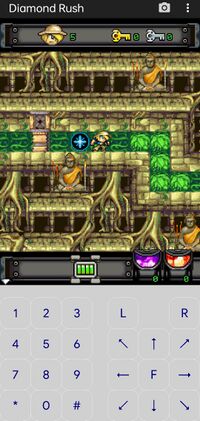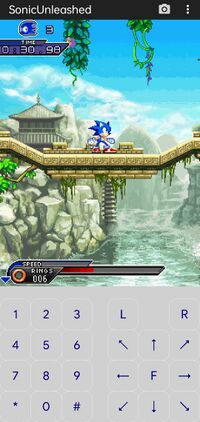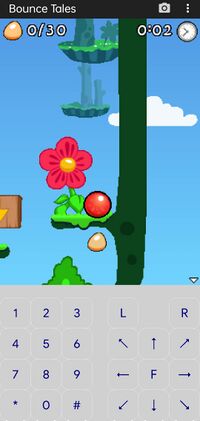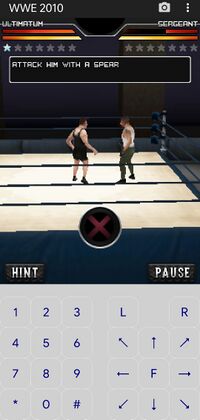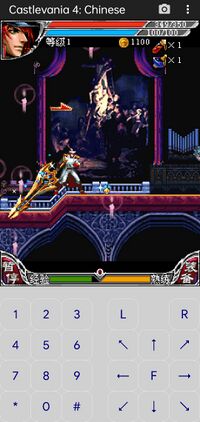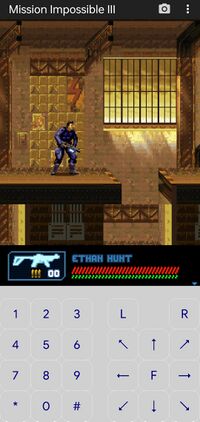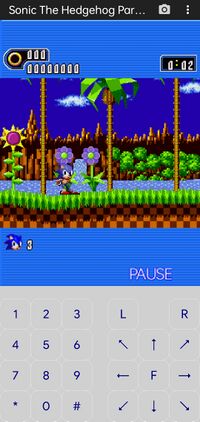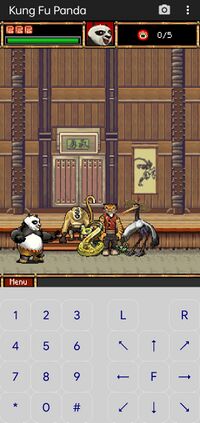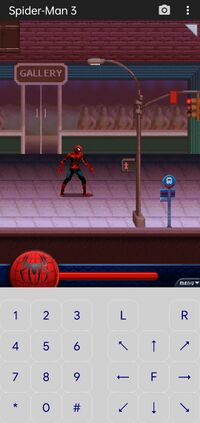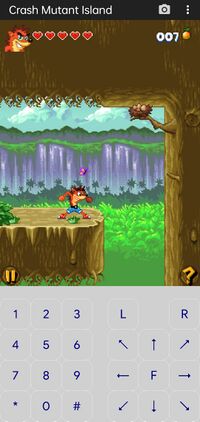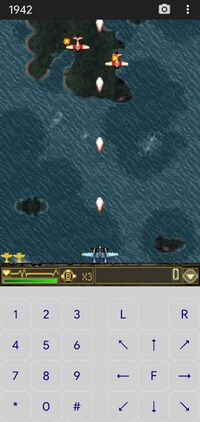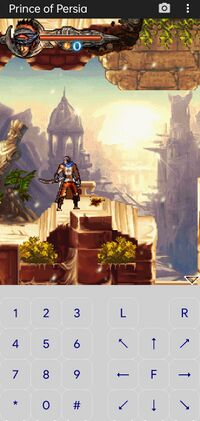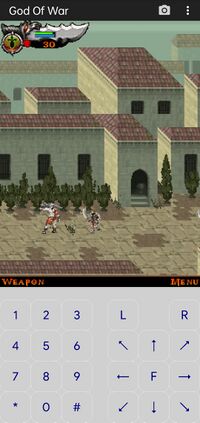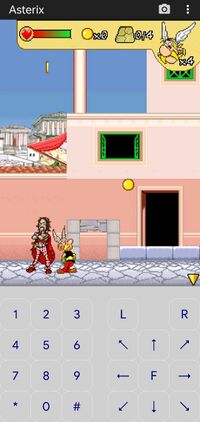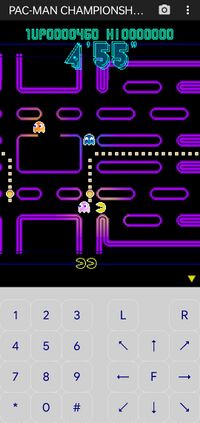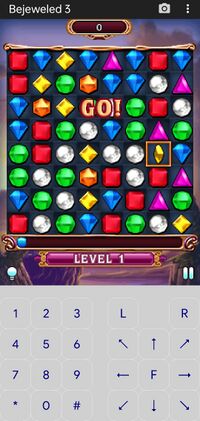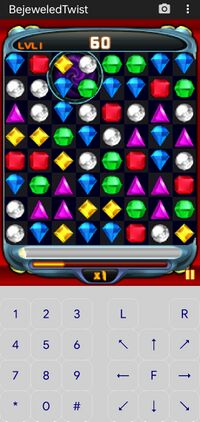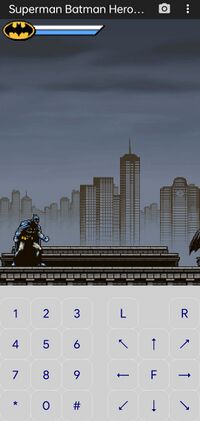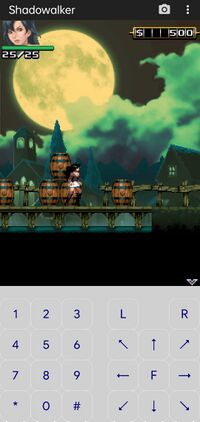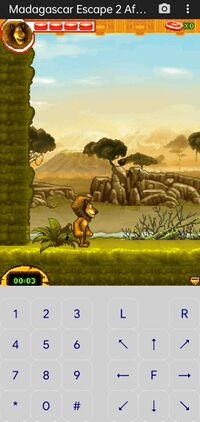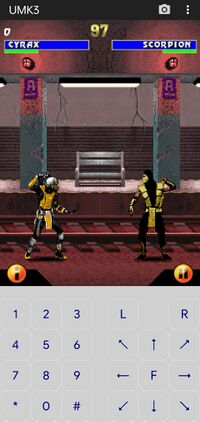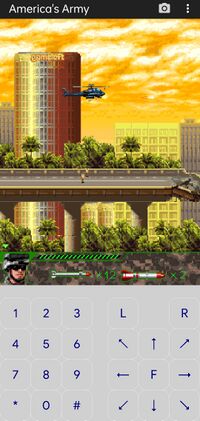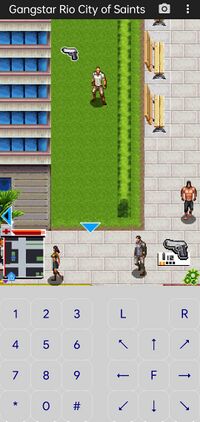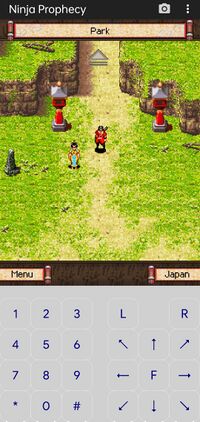(Tags: Mobile edit, Mobile web edit) |
(Tags: Mobile edit, Mobile web edit) |
| Line 1: |
Line 1: |
| − | {{Infobox console | + | {{Infobox emulator |
| − | |title = Nintendo Game Boy/Color | + | |logo = JL.png |
| − | |logo = Game_Boy.png | + | |logowidth = 150 |
| − | |developer = [[:Nintendo]] | + | |version = {{JLVer}} |
| − | |type = [[:Category:Handheld consoles|Handheld game console]] | + | |active = Yes |
| − | |generation = [[:Category:Fourth-generation video game consoles|Fourth generation]] | + | |platform = [[Emulators on Android|Android]] |
| − | |release = 1989 | + | |target = [[Cellphone_emulators#J2ME (Java 2 Micro Edition)|Java 2 Micro Edition]] and [[Cellphone_emulators#KDDI ezplus|ezplusアプリ]] |
| − | |discontinued = 2003 | + | |developer = [https://github.com/nikita36078 Nikita Shakarun] |
| − | |predecessor = [[Game & Watch]] | + | |support = [https://www.paypal.me/nikita36078 PayPal] |
| − | |successor = [[Virtual Boy emulators|Virtual Boy]] | + | [https://money.yandex.ru/to/41001670387745 Yandex Money] |
| − | |emulated = {{✓}} | + | |license = Apache 2.0 |
| | + | |source = [https://github.com/nikita36078/J2ME-Loader/releases GitHub] |
| | + | |website = |
| | + | |prog-lang = Java |
| | }} | | }} |
| | | | |
| − | The '''[[wikipedia:Game Boy|Game Boy]]''' (GB) and '''[[wikipedia:Game Boy Color|Game Boy Color]]''' (GBC) are 8-bit, fourth-generation handheld consoles released by Nintendo on July 31, 1989 and November 18, 1998 respectively and retailed for {{Inflation|USD|89.95|1998}}. The Game Boy has a Sharp LR35902 core CPU at 4.19 MHz. It had a monochrome display that could only show four shades of grey, albeit with a olive green tinge on the original. The Game Boy Color uses the same LR35902 core as the original; while it is clocked at 8.38 MHz, it can be underclocked to 4.19 MHz for backwards-compatibility purposes. It was named such from its color screen, but it also had a larger memory size and a faster CPU. The hardware similarities allow cross-compatibility between the two platforms and they are often treated as one. They would both be succeeded by the backward-compatible [[Game Boy Advance emulators|Game Boy Advance]].
| + | '''J2ME Loader''' is a free and open-source [[Cellphone_emulators#J2ME (Java 2 Micro Edition)|Java 2 Micro Edition]] and [[Cellphone_emulators#KDDI ezplus|ezplusアプリ]] emulator <ref group=N> It's not exactly an emulator. It converts MIDlets to Android API and makes J2ME applications to run almost natively in [https://en.m.wikipedia.org/wiki/Dalvik_(software) Dalvik] or [https://en.m.wikipedia.org/wiki/Android_Runtime Android Runtime]</ref> |
| | + | for [[Emulators on Android|Android]] |
| | + | It's written in Java. This project is a fork of [https://github.com/NaikSoftware/J2meLoader J2meLoader]. |
| | | | |
| − | Nintendo re-released the console as the '''Game Boy Pocket''' in 1996, with a more compact body and a better screen. A front light was added to a special edition of the Pocket in Japan called the '''Game Boy Light''', a feature that wouldn't be seen outside of Japan until the Game Boy Advance SP.
| + | ==Overview== |
| | | | |
| − | Nintendo released a peripheral for the [[Super Nintendo emulators|Super Nintendo Entertainment System]] called [[wikipedia:Super Game Boy|Super Game Boy]] in June 1994, which was modeled like a cartridge but included its own cartridge slot for Game Boy/Color games, as well as the hardware needed to translate the games. Many Game Boy/Color emulators offer at least some of the special features it included, such as added borders, colorization, custom button mappings, and other features. It was possible to link, but without the external port, as well as errors in the CPU, it would not be feasible to the end user. These issues would later be corrected in the Japan-exclusive Super Game Boy 2.
| + | Released in 2017, the emulator is currently capable of playing around lot of games. This is currently the highest-compatibility J2ME/ezplusアプリ emulator available. Converts .JAR and .KJX files offline using its own resources. Easily launches both 2D & 3D apps. Samsung & Nokia API implemented. Supports different keyboard layouts and customization. It is highly accurate, with the right frame rate for each game, as well as vibration. Has slightly improved performance through hardware acceleration, but games won't run too fast. Runs almost every Nokia game, even ones that don't work with [[KEmulator]] or [[FreeJ2ME]], but fails with Sony Ericsson 3D engine (Mascot Capsule 3D), due to the fact that the Mascot Capsule 3D is almost difficult to port. This is implemented with [[JL-Mod]] emulator. |
| | | | |
| − | ==Emulators== | + | <b>System requirements :</b> |
| − | Because of how relatively easy popular 8-bit consoles are to emulate, tons of Game Boy emulators exist. For a list of open-source projects, see [https://github.com/search?o=desc&q=gameboy+emulator&s=updated&type=Repositories&utf8=%E2%9C%93 this GitHub query]. For a list of accuracy tests, see [[GB/C Tests]].
| + | Android 4.0 + |
| − | {| class="wikitable" style="text-align:center;"
| + | |
| − | ! scope="col"|Name
| + | ==Features== |
| − | ! scope="col"|Platform(s)
| + | |
| − | ! scope="col"|Latest Version
| + | * Fast emulation |
| − | ! scope="col"|Game Link Support
| + | * Highly compatibility |
| − | ! scope="col"|[[libretro|Libretro Core]]
| + | * KDDI ezplusアプリ <code>.kjx</code> games are support. Only support 128x160 resulation and font option recommend is <small>(9 - 13 - 15)</small> |
| − | ! scope="col"|<abbr title="Free/Libre and Open-Source Software">FLOSS</abbr>
| + | * Bluetooth API support |
| − | ! scope="col"|Active
| + | * Touchscreen input support |
| − | ! scope="col"|[[Recommended Emulators|Recommended]]
| + | * Supports external virtual keyboards and QWERTY input |
| | + | * 3D support |
| | + | * Menu key remapping support |
| | + | * Supports different keyboard layouts and customization. |
| | + | * Individual settings for each application. |
| | + | * Highly accurate, with the right frame rate (FPS support) for each game, as well as vibration. |
| | + | * Hardware acceleration support (but games won't run too fast). |
| | + | * Accelerometer support. |
| | + | * Scaling support. |
| | + | |
| | + | ; → <i>Add support of external shaders filters</i> : |
| | + | |
| | + | Only shaders for [[PPSSPP]] (same format) are supported to use, you need to put them in the <code>J2ME-Loader/shaders</code> folder in the working folder of the emulator, further in the game settings, select the graphics output mode: <code>HW acceleration (OpenGL ES)</code> and select the shader of interest A small collection of compatible shaders can be taken in this repository: [https://github.com/woesss/ppsspp_shaders ppsspp_shaders] |
| | + | |
| | + | ; → <i>Theme</i> |
| | + | {| class="wikitable mw-sortable" |
| | |- | | |- |
| − | !colspan="8"|PC / x86
| + | |Dark |
| | + | |White |
| | |- | | |- |
| − | |[[SameBoy]] | + | |[[File:JL_dark.jpg|300px]] |
| − | |align=left|{{Icon|Windows|Linux|macOS|FreeBSD}} | + | |[[File:JL_white.jpg|300px]] |
| − | |[https://sameboy.github.io/downloads {{SameBoyVer}}]
| + | |} |
| − | |{{✓}}<ref group=N name=sameboylink>SameBoy's libretro core supports Link Cable, standalone does not.</ref> ||{{✓}} ||{{✓}} ||{{✓}} ||{{✓}} | + | |
| | + | ; → <i>FPS</i> |
| | + | {| class="wikitable mw-sortable" |
| | |- | | |- |
| − | |[[BGB]] | + | |FPS |
| − | |align=left|{{Icon|Windows}}
| |
| − | |[http://bgb.bircd.org/#downloads {{BGBVer}}]
| |
| − | |{{✓}} ||{{✗}} ||{{✗}} ||{{✓}} ||{{✓}}
| |
| | |- | | |- |
| − | |[[Gambatte]] | + | |[[File:JL_FPS.png|300px]] |
| − | |align=left|{{Icon|Windows|Linux|macOS}} | + | |} |
| − | |[https://sourceforge.net/projects/gambatte/files/gambatte {{GambatteVer}}]
| + | |
| − | |{{✗}} ||{{✓}} ||{{✓}} ||{{✓}} ||{{✓}}
| + | ; → <i>Force full-screen</i> |
| | + | {| class="wikitable mw-sortable" |
| | |- | | |- |
| − | |[[Gearboy]] | + | |Normal |
| − | |align=left|{{Icon|Windows|Linux|macOS|FreeBSD}} | + | |Force Fullscreen |
| − | |[https://github.com/drhelius/Gearboy/releases {{GearboyVer}}]
| |
| − | |{{✗}} ||{{✓}} ||{{✓}} ||{{✓}} ||{{✓}}
| |
| | |- | | |- |
| − | |[[BizHawk]] | + | |[[File:Force_nm.jpg|300px]] |
| − | |align=left|{{Icon|Windows}} | + | |[[File:Force_fs.jpg|300px]] |
| − | |[http://tasvideos.org/BizHawk/ReleaseHistory.html {{BizHawkVer}}]
| + | |} |
| − | |{{✓}} ||{{✗}} ||{{✓}} ||{{✓}} ||{{✓}}
| + | |
| | + | ==How to use== |
| | + | |
| | + | ; → <i>Installation <small> (J2ME/ezplusアプリ)</small></i> : |
| | + | |
| | + | <center><big>Download</big></center> |
| | + | {| cellpadding="4" |
| | |- | | |- |
| − | |[http://binji.github.io/binjgb/ binjgb]
| + | |align=center|{{Icon|APK-big}} |
| − | |align=left|{{Icon|Web}} | + | |'''[https://install.appcenter.ms/users/nikita36078/apps/j2me-loader/distribution_groups/testers Automatic Builds]''' |
| − | |[https://github.com/binji/binjgb/releases {{binjgbVer}}] | |
| − | |{{✗}} ||{{✗}} ||{{✓}} ||{{✓}} ||{{~}}
| |
| | |- | | |- |
| − | |[[MAME]]
| + | |align=center|{{Icon|APK-big}} |
| − | |align=left|{{Icon|Windows|Linux|macOS|FreeBSD}} | + | |'''[https://github.com/nikita36078/J2ME-Loader/releases GitHub][https://f-droid.org/app/ru.playsoftware.j2meloader F-Droid]''' |
| − | |[http://www.mamedev.org/release.html {{MAMEVer}}] | |
| − | |{{✗}} ||{{✓}} ||{{✓}} ||{{✓}} ||{{~}}
| |
| | |- | | |- |
| − | |[http://emulicious.net Emulicious]
| + | |align=center|{{Icon|APK-big}} |
| − | |align=left|{{Icon|Windows|Linux|macOS|FreeBSD}}
| + | |'''[https://play.google.com/store/apps/details?id=ru.playsoftware.j2meloader Play Store]''' |
| − | |[https://emulicious.net/downloads {{EmuliciousVer}}]
| + | |} |
| − | |{{✗}} ||{{✗}} ||{{✗}} ||{{✓}} ||{{~}}
| + | |
| − | |-
| + | Download a latest version of J2ME Loader on your Android device. |
| − | |[[higan]]
| + | |
| − | |align=left|{{Icon|Windows|Linux|macOS|FreeBSD}} | + | Next, |
| − | |[http://byuu.org/emulation/higan {{higanVer}}]
| + | Click [[File:JL_+.png|35px]] (button) at the lower right corner in the main J2ME-Loader Windows and select the <code>.JAR</code> or <code>.KJX</code> program on your file manager, after setup your game configures. |
| − | |{{✗}} ||{{✓}} ||{{✓}} ||{{✓}} ||{{✗}}
| + | |
| − | |-
| + | ==Key binding== |
| − | |[[mGBA]]
| + | |
| − | |align=left|{{Icon|Windows|Linux|macOS|FreeBSD}}
| + | Keys : <i>Default</i> |
| − | |[https://mgba.io/downloads.html {{MGBAVer}}] | + | |
| − | |{{✓}}<ref group=N name=mgbalink>Pretty buggy but sometimes works.</ref> ||{{✓}} ||{{✓}} ||{{✓}} ||{{✗}}
| + | {| class="wikitable mw-sortable" |
| − | |-
| |
| − | |[[VisualBoy Advance|VisualBoy Advance-M (VBA-M)]]
| |
| − | |align=left|{{Icon|Windows|Linux|macOS|FreeBSD}}
| |
| − | |[https://github.com/visualboyadvance-m/visualboyadvance-m/releases {{VBAMVer}}]
| |
| − | |{{✓}} ||{{✓}}<ref group=N name=one>Full GBC, GBA and GB support since version 2.1.3.</ref>||{{✓}} ||{{✓}} ||{{✗}}
| |
| − | |-
| |
| − | |[[GBE+]]
| |
| − | |align=left|{{Icon|Windows|Linux|macOS}} | |
| − | |[https://github.com/shonumi/gbe-plus/releases {{GBEVer}}]
| |
| − | |{{✗}} ||{{✗}} ||{{✓}} ||{{✓}} ||{{✗}}
| |
| − | |-
| |
| − | |[https://fms.komkon.org/VGB VGB]
| |
| − | |align=left|{{Icon|Windows|Linux|macOS|FreeBSD}}
| |
| − | |[https://fms.komkon.org/VGB {{VGBVer}}]
| |
| − | |{{✗}} ||{{✗}} ||{{✗}} ||{{✓}} ||{{✗}}
| |
| − | |-
| |
| − | |[[Pantheon]]
| |
| − | |align=left|{{Icon|Windows}}
| |
| − | |[http://bostjan-grandovec.si/Content/News.htm {{PantheonVer}}]
| |
| − | |{{✗}} ||{{✗}} ||{{✗}} ||{{✓}} ||{{✗}}
| |
| − | |-
| |
| − | |[http://hhug.me/ hhugboy]
| |
| − | |align=left|{{Icon|Windows}}
| |
| − | |[https://github.com/tzlion/hhugboy/releases {{hhugboyVer}}]
| |
| − | |{{✓}} ||{{✗}} ||{{✓}} ||{{✗}} ||{{✗}}
| |
| − | |-
| |
| − | |UGE
| |
| − | |align=left|{{Icon|Windows}}
| |
| − | |[https://github.com/SuperDisk/hUGETracker/releases {{UGEVer}}]
| |
| − | |{{✗}} ||{{✗}} ||{{✓}} ||{{✓}} ||{{✗}}
| |
| − | |-
| |
| − | |[[KiGB]]
| |
| − | |align=left|{{Icon|Windows|Linux|macOS}}
| |
| − | |[http://kigb.emuunlim.com/downloads.htm 2.05]
| |
| − | |{{✓}} ||{{✗}} ||{{✗}} ||{{✗}} ||{{✗}}
| |
| − | |-
| |
| − | |[[TGB Dual]]
| |
| − | |align=left|{{Icon|Windows|Linux}}<ref group=N name=two>On Linux as an SDL port (and the [[libretro]] core is based on this version).</ref>
| |
| − | |[https://github.com/libertyernie/tgbdual_L/releases git]
| |
| − | |{{✓}} ||{{✓}}<ref group=N name=two /> ||{{✓}} ||{{✗}} ||{{✗}}
| |
| − | |-
| |
| − | |GiiBiiAdvance
| |
| − | |align=left|{{Icon|Windows|Linux}}
| |
| − | |[https://github.com/AntonioND/giibiiadvance/releases git]
| |
| − | |{{✗}} ||{{✗}} ||{{✓}} ||{{✗}} ||{{✗}}
| |
| − | |-
| |
| − | |MetroBoy
| |
| − | |align=left|{{Icon|Windows}}
| |
| − | |[https://github.com/aappleby/MetroBoy/releases {{MetroBoyVer}}]
| |
| − | |{{✗}} ||{{✗}} ||{{✓}} ||{{✓}} ||{{✗}}
| |
| − | |- | |
| − | !colspan="8"|Mobile / ARM
| |
| − | |-
| |
| − | |[[mGBA]]
| |
| − | |align=left|{{Icon|Android|iOS|Linux|Pandora}}
| |
| − | |[https://endrift.com/mgba/downloads.html {{MGBAVer}}]
| |
| − | |{{✓}} ||{{✓}} ||{{✓}} ||{{✓}} ||{{✓}}
| |
| − | |-
| |
| − | |GBA4iOS
| |
| − | |align=left|{{Icon|iOS}}
| |
| − | |[https://iemulators.com/gba4ios 2.1]
| |
| − | |{{✓}} ||{{✗}} ||? ||{{✓}} ||{{✓}}
| |
| | |- | | |- |
| − | |[[Game Play Color]] | + | |<b>Key</b> |
| − | |align=left|{{Icon|iOS}}
| + | |<b>Action</b> |
| − | |[https://github.com/gameplaycolor/gameplaycolor/releases {{GamePlayColorVer}}] | |
| − | |{{✗}}||{{?}} ||? ||{{✗}} ||{{✓}}
| |
| | |- | | |- |
| − | |[http://www.explusalpha.com/home/gbc-emu GBC.emu]<br/><small>(Gambatte 0.5-wip based)</small> | + | |D-PAD Up |
| − | |align=left|{{Icon|Android|Pyra}}
| + | |<code>↑</code> |
| − | |[https://play.google.com/store/apps/details?id=com.explusalpha.GbcEmu 1.5.54]</br>[https://pyra-handheld.com/repo/apps/76 1.5.46.01 Pyra]
| |
| − | |? ||{{✗}} ||{{✓}} ||{{✓}} ||{{✓}}
| |
| | |- | | |- |
| − | |[http://www.explusalpha.com/ GBA.emu]<br/><small>(VBA-M r1097 based)</small> | + | |D-PAD Down |
| − | |align=left|{{Icon|Android|Pyra}}
| + | |<code>↓</code> |
| − | |[https://play.google.com/store/apps/details?id=com.explusalpha.GbaEmu 1.5.54]</br>[https://pyra-handheld.com/repo/apps/75 1.5.46.01 Pyra]
| |
| − | |? ||{{✗}} ||{{✓}} ||{{✓}} ||{{✓}}
| |
| | |- | | |- |
| − | |[https://my-oldboy-free-gbc-emulator.en.uptodown.com/android My OldBoy!] | + | |D-PAD Left |
| − | |align=left|{{Icon|Android}}
| + | |<code>←</code> |
| − | |[https://play.google.com/store/apps/details?id=com.fastemulator.gbc 1.5.2] | |
| − | |{{✓}} ||{{✗}} ||{{✗}} ||{{✓}} ||{{✗}}
| |
| | |- | | |- |
| − | |John GBC | + | |D-PAD Right |
| − | |align=left|{{Icon|Android}} | + | |<code>→</code> |
| − | |[https://play.google.com/store/apps/details?id=com.johnemulators.johngbc 3.93]
| |
| − | |? ||{{✗}} ||{{✗}} ||{{✓}} ||{{✗}}
| |
| | |- | | |- |
| − | |[https://github.com/afjcjsbx/gambatte-droid git] | + | |D-PAD Center |
| − | |align=left|{{Icon|Android}} | + | |<code>F</code> |
| − | |1.2
| |
| − | |? ||{{✗}} ||? ||{{✗}} ||{{✗}}
| |
| | |- | | |- |
| − | |[http://arktos.se/meboy/ MeBoy] | + | |LEFT-Soft Key |
| − | |align=left|{{Icon|Java}} | + | |<code>L</code> |
| − | |2.2
| |
| − | |{{✗}} ||{{✗}} ||{{✗}} ||{{✗}} ||{{✗}}
| |
| | |- | | |- |
| − | !colspan="8"|Consoles
| + | |RIGHT-Soft Key |
| | + | |<code>R</code> |
| | |- | | |- |
| − | |[http://gbatemp.net/threads/gameyob-a-gameboy-emulator-for-ds.343407/ GameYob DS] | + | |NUM1 |
| − | |align=left|{{Icon|NDS}}
| + | |<code>1</code> |
| − | |[http://www.emucr.com/search/label/GameYob git]
| |
| − | |{{✓}} <small>(NiFi)</small> ||{{✗}} ||? ||{{✗}} ||{{✓}} | |
| | |- | | |- |
| − | |[https://gbatemp.net/threads/gameyob-3ds-gb-c-emu.372523/ GameYob 3DS] | + | |NUM2 |
| − | |align=left|{{Icon|3DS}} | + | |<code>2</code> |
| − | |[https://www.gamebrew.org/wiki/GameYob_3DS 1.0.8]
| |
| − | |? ||{{✗}} ||? ||{{✗}} ||{{✓}}
| |
| | |- | | |- |
| − | |[[VisualBoy_Advance#VBA-M|Visual Boy Advance-M (VBA-M)]] | + | |NUM3 |
| − | |align=left|{{Icon|GCN|Wii}}
| + | |<code>3</code> |
| − | |r1231
| |
| − | |{{✓}} ||{{✓}} <small>(as VBA-Next)</small> ||? ||{{✓}} ||{{✓}} | |
| | |- | | |- |
| − | |PlutoBoy | + | |NUM4 |
| − | |align=left|{{Icon|PSP}} | + | |<code>4</code> |
| − | |[https://github.com/RossMeikleham/PlutoBoy git]
| |
| − | |{{✗}} ||{{✗}} ||{{✓}} ||{{✓}} ||{{✓}}
| |
| | |- | | |- |
| − | |MasterBoy | + | |NUM5 |
| − | |align=left|{{Icon|PSP}} | + | |<code>5</code> |
| − | |[https://archive.org/details/masterboy-theelf.7z Theelf mod][https://archive.org/details/masterboy.-7z 2.02][https://github.com/PSP-Archive/MasterBoy git]
| |
| − | |{{✗}} ||{{✗}} ||{{✓}} ||{{✗}} ||{{✓}}
| |
| | |- | | |- |
| − | |[[Virtual Console]] | + | |NUM6 |
| − | |align=left|{{Icon|3DS}} | + | |<code>6</code> |
| − | |8.10
| |
| − | |{{✓}} <small>(Pokemon only)</small> ||{{✗}} ||{{✗}} ||{{✓}} ||{{✓}}
| |
| | |- | | |- |
| − | |[[mGBA]] | + | |NUM7 |
| − | |align=left|{{Icon|Wii|3DS}}<br>{{Icon|PSV}} | + | |<code>7</code> |
| − | |[https://endrift.com/mgba/downloads.html {{MGBAVer}}]
| |
| − | |? ||{{✓}} ||? ||{{✓}} ||{{✗}}
| |
| | |- | | |- |
| − | |GeMP | + | |NUM8 |
| − | |align=left|{{Icon|PSP}} | + | |<code>8</code> |
| − | |[https://archive.org/details/ge-mp.-7z 3.3 Final][https://github.com/PSP-Archive/GeMP git]
| |
| − | |{{✗}} ||{{✗}} ||{{✓}} ||{{✗}} ||{{✓}}
| |
| | |- | | |- |
| − | |RIN | + | |NUM9 |
| − | |align=left|{{Icon|PSP}} | + | |<code>9</code> |
| − | |[https://github.com/mbarczak/psp_rin git]
| |
| − | |{{✗}} ||{{✗}} ||{{✓}} ||{{✗}} ||{{✓}}
| |
| | |- | | |- |
| − | |E[mulator]-PSP | + | |NUM0 |
| − | |align=left|{{Icon|PSP}} | + | |<code>0</code> |
| − | |[https://archive.org/details/emulator_082f.7z 0.82f][https://github.com/PSP-Archive/e-mulator-PSP git]
| |
| − | |{{✗}} ||{{✗}} ||{{✓}} ||{{✗}} ||{{~}}
| |
| | |- | | |- |
| − | |PSP-Gnuboy | + | |* |
| − | |align=left|{{Icon|PSP}} | + | |<code>*</code> |
| − | |[https://archive.org/details/pspgnuboy_rls.7z r1]
| |
| − | |{{✗}} ||{{✗}} ||? ||{{✗}} ||{{~}}
| |
| | |- | | |- |
| − | |SpiceBoy | + | |# |
| − | |align=left|{{Icon|PSP}} | + | |<code>#</code> |
| − | |[https://archive.org/details/spice-boy.-7z r2]
| |
| − | |{{✗}} ||{{✗}} ||? ||{{✗}} ||{{~}}
| |
| | |} | | |} |
| − | <references group=N />
| |
| − |
| |
| − | ===Comparison===
| |
| − |
| |
| − | ====Game Boy-only emulators====
| |
| − | ;[[SameBoy]]:A relatively new emulator, probably the most accurate Game Boy emulator currently. The UI is simple and easy to use. It includes open source bootroms, although these can be replaced with real ones. Also emulates Game Boy Camera and Game Boy Printer.
| |
| − | ;[[BGB]]:A closed-source emulator for Windows (and [[Wine]]) with excellent Game Boy and Game Boy Color accuracy, as well as near flawless link support. It has a wealth of options for color palettes and even enabling Super Game Boy colors and borders, though it doesn't emulate all of its functions. It also has an advanced debugger.
| |
| − | ;[[Gambatte]]:Extremely accurate open-source Game Boy/Color emulator. It has a good range of options and features, though not quite as much as some other emulators. It has not been as active lately.
| |
| − | ;[[TGB Dual]]:An ancient emulator that supports link cable emulation. It also supports [[netplay]], but it requires a VPN. The libretro port supports local multiplayer using player 2's controls.
| |
| − | ;[[KiGB]]:An old and obsolete emulator which boasted its accuracy but was proven to be full of game-specific hacks.<ref>https://github.com/mgba-emu/mgba/issues/238</ref><ref>http://gbdev.gg8.se/wiki/articles/Test_ROMs#Emulators_running_on_desktop_computers</ref><ref>http://gbdev.gg8.se/wiki/articles/KiGB</ref> It has a wide selection of features, but other emulators have caught up and are already doing much better.
| |
| − | ;[https://github.com/AntonioND/giibiiadvance GiiBiiAdvance]:Pioneered full GB Camera emulation, including webcam support. Aside from that, it's an unfinished emulator with the basics set up, but its promising future currently on hiatus. It has very accurate timing.
| |
| | | | |
| − | ;[https://github.com/aappleby/MetroBoy MetroBoy]:Extremely accurate Game Boy simulator which being written in a subset of C++ that's designed to to be mechanically translated into Verilog HDL.
| + | ==Known bugs and issues== |
| | | | |
| − | '''List of recommended GB/GBC emulators for Android:'''
| + | * [[JL-Mod#Mascot Capsule 3D compatibility list|Mascot Capsule 3D V3]] games doesn't works. |
| − | * [https://www.androidauthority.com/best-game-boy-emulators-for-android-368530/ 10 best Game Boy Advanced, Game Boy Color, and Game Boy emulators for Android] (SEPTEMBER 2, 2018. Includes some emulators not found in above charts. Reviews may be subjective.) | |
| | | | |
| − | ====Backwards-compatible GBA emulators==== | + | ==Screenshots== |
| − | ;[[mGBA]]:Primarily emulates the [[Game Boy Advance emulators|Game Boy Advance]] but it also includes GB/C support much like the original system. It's still in development, but it's already on the level of many other emulators.
| |
| − | ;[[GBE+]]:A recently rewritten emulator that has a large effort in preserving the functions of [[#Game Boy Features|obscure accessories]] that other emulators don't focus on. It can also load custom tiles in games, including colorized tiles for original Game Boy titles.
| |
| − | ;[[VisualBoy Advance#VBA-M|VisualBoy Advance-M <small>(VBA-M)</small>]]:Used to be the go-to for Game Boy Advance emulation and even included solid GB/C emulation. It's now behind [[mGBA]] on both fronts.
| |
| | | | |
| − | ====[[Multi-system emulators]]====
| + | {| class="wikitable mw-sortable" |
| − | ;[[higan]]:Because it started out as a [[Super Nintendo emulators|SNES emulator]] (its original name was bsnes), it was the first and only one that properly emulated all of the Super Game Boy's features, such as SPC sound chip utilization. Versions of bsnes at and before v073 used the Gambatte core for its Super Game Boy functionality, but byuu eventually made his own Game Boy core, which ended up having pretty good accuracy.
| |
| − | ;[[BizHawk]]:Uses a modified Gambatte core. It provides speedrunning tools.
| |
| − | ;[[MAME]]:Has solid Game Boy emulation through its <code>gameboy</code> driver despite the sound being imperfect, as well as slightly worse Game Boy Color compatibility through its <code>gbcolor</code> driver (where both the graphics and sound are imperfect). Despite its setbacks, it aims to feature compatibility with obscure mappers that other emulators usually ignore, like Wisdom Tree games or MMM01 multicarts. Accuracy was improved upon with contributions by Judge_.
| |
| − | ;[[Mednafen]]:Its Game Boy Advance core is forked from an old version of [[VisualBoy Advance]].
| |
| − | | |
| − | ==Emulation issues==
| |
| − | | |
| − | ===Oversaturation===
| |
| − | [[File:Gbc over saturation2.png|thumb|right|350px|Comparison of saturation levels in [[VisualBoy Advance#VBA-M|VBA-M]] and [[Gambatte]].]]
| |
| − | The Game Boy Color's screen is under-saturated. Game developers often work around this by using brighter colors knowing it'll be compensated for on hardware. This does not translate well in emulation, because standard LCD screens don't account for this sort of issue. Many emulators attempt to combat this issue with options that adjust accordingly; if not directly, then [[Shaders_and_Filters#Image_Adjustment|shader functionality]] may be implemented.
| |
| − | | |
| − | This issue also affects [[Game Boy Advance emulators#Oversaturation|Game Boy Advance emulation]].
| |
| − | | |
| − | ====Emulator options====
| |
| − | | |
| − | '''mGBA:''' Under Tools > Settings > Shaders, you will find three customizable '''Desaturation''' parameters.
| |
| − | | |
| − | '''VBA-M:''' Under Options > Game Boy, you will find the '''GB color option'''. The recent nightly builds also include the '''LCD Filter''' option.
| |
| − | | |
| − | ===Unlicensed Mappers===
| |
| − | Much like the NES, the Game Boy (and by extension, the Game Boy Color) used '''Memory Bank Controllers''' (MBC) (called MMCs on the NES) and also known informally as '''mappers''', to go beyond the restrictive initial hardware specifications. Nevertheless, Nintendo was much more careful to standardize their specifications to just a small number of possible mappers. Moreover, Game Boy ROMs now included an official internal header mandated by Nintendo that included the correct MMC type. This meant that for the officially licensed games, these mappers proved to be rarely a problem... with some notable unimplemented exceptions: Net de Get's MBC6 that offered downloadable content off the internet, and the MMM01 footer used for some official multi-cart games, among others.
| |
| − | | |
| − | However, shit hits the fan when it comes to '''unlicensed games''', since they didn't necessarily respect Nintendo's specifications about how a given mapper type should handle its memory and behave in general, and internal headers were often filled with erroneous data to hinder dumping and emulation efforts. Some emulators like MESS and [http://hhug.me/?tags=hhugboy hhugboy] try to emulate that behavior with various degrees of success ([http://hhug.me/dump/ Compatibility List]). The hhugboy project also proposed a similar solution to iNES for this mapper problem, as the [http://hhug.me/gbx/1.0 gbx ROM format] that appends a footer with extra information needed for some unlicensed games. However, this format, much less unlicensed hardware quirks, isn't widely adopted aside from tentative mGBA support.
| |
| − | | |
| − | ==Hardware Features==
| |
| − | ===IR Transmitter===
| |
| − | The Game Boy Color had an infrared transmitter and receiver. Generation II Pokémon games made use of this feature through Mystery Gift. Super Mario Bros. Deluxe could send high scores to another cartridge. GBE+ had [https://shonumi.github.io/articles/art4.html basic IR emulation] back in July 2016 but it then only worked with Pokémon games. Now, as of [https://shonumi.github.io/articles/art11.html April 2018], it has full IR emulation for most IR-enabled games (Hudson Soft's HuC-1's IR capabilities need to be emulated for Japanese ''Pokémon TCG'').
| |
| − | | |
| − | ===Game Boy Camera===
| |
| − | {| class="wikitable" style="text-align:center;" | |
| − | ! scope="col"|Name
| |
| − | ! scope="col"|Platform(s)
| |
| − | ! scope="col"|Build to Use
| |
| − | ! scope="col"|[[Recommended Emulators|Recommended]]
| |
| | |- | | |- |
| − | ! colspan="4"|PC / x86
| + | |[[File:DR.jpg|200px]] |
| | + | |[[File:SU.jpg|200px]] |
| | + | |[[File:Bounce.jpg|200px]] |
| | + | |[[File:WWE10.jpg|200px]] |
| | |- | | |- |
| − | |[[mGBA]] | + | |[[File:C4D.jpg|200px]] |
| − | |align=left|{{Icon|Windows|Linux|macOS|FreeBSD}} | + | |[[File:MI3.jpg|200px]] |
| − | |0.7 | + | |[[File:SHP1.jpg|200px]] |
| − | |{{✓}} | + | |[[File:KFP3.jpg|200px]] |
| | |- | | |- |
| − | |[[VisualBoy Advance#VBA-M|VBA-M]] | + | |[[File:SM3.jpg|200px]] |
| − | |align=left|{{Icon|Windows|Linux|macOS|FreeBSD}} | + | |[[File:CMI.jpg|200px]] |
| − | |Latest | + | |[[File:1942.jpg|200px]] |
| − | |{{✓}} | + | |[[File:POP08.jpg|200px]] |
| | |- | | |- |
| − | |GiiBiiAdvance | + | |[[File:GOWB.jpg|200px]] |
| − | |align=left|{{Icon|Windows}} | + | |[[File:Asterix.jpg|200px]] |
| − | |? | + | |[[File:Pac-manCE.jpg|200px]] |
| − | |{{✗}} | + | |[[File:BJWT.jpg|200px]] |
| | |- | | |- |
| − | |[[BGB]] | + | |[[File:BJW3.jpg|200px]] |
| − | |align=left|{{Icon|Windows}} | + | |[[File:SVB.jpg|200px]] |
| − | |? | + | |[[File:Shadowalker.jpg|200px]] |
| − | |{{✗}} | + | |[[File:Madagascar3.jpg|200px]] |
| | |- | | |- |
| − | |Hashcam | + | |[[File:UMK3.jpg|200px]] |
| − | |align=left|{{Icon|Windows}} | + | |[[File:AASO.jpg|200px]] |
| − | |[http://www.darkfader.net/gbc Source] | + | |[[File:G4R.jpg|200px]] |
| − | |{{✗}} | + | |[[File:NinjaP.jpg|200px]] |
| | |} | | |} |
| − | The Game Boy Camera is an official Nintendo accessory for the Game Boy and was released in 1998. Users can take pictures and modify them with stickers and frames, as well as play several included minigames. In addition to the original model, there was a US-exclusive Legend of Zelda: Ocarina of Time edition that included different stamps.
| |
| | | | |
| − | The first emulator to have some capability of emulating the Game Boy Camera was a modified version of an old emulator called Hash. This version, named Hashcam, can still be found on the author's website. While there were some efforts to run the Game Boy Camera ROM in BGB unofficially, the author didn't show much interest in it. However, it is fully emulated with webcam support in a lesser-known emulator called GiiBiiAdvance.
| + | ==Compatibility== |
| | | | |
| − | As of version 0.7.0, or any dev builds post 0.6.0, mGBA can emulate this accessory by either using the PC's webcam or sending a BMP, GIF, JPEG, PNG, or other image format to the game, as if it was coming from the camera itself.<ref name="mGBA_Cam">{{cite web|url=https://twitter.com/mGBA_emu/status/890954205472501762|title=Game Boy Camera in mGBA dev builds|publisher=Twitter|accessdate=2018-08-10|date=2017-07-28}}</ref> The camera is also functional on the 3DS port. To enable the PC webcam, go to <code>Game Boy</code> under <code>settings</code> and switch the <code>camera driver</code> to <code>Qt Multimedia</code>, or by editing <code>qt.ini</code> and setting <code>cameraDriver=1</code> under <code>[General]</code>.
| + | J2ME Loader is currently capable of playing thousands of J2ME games (Runs almost every Nokia games, especially GameLoft games) with ezplusアプリ games support, more than 96.7% of the J2ME library with supports most 2D games and also 3D with some limitations ([[JL-Mod#Mascot Capsule 3D compatibility list|Mascot Capsule 3D V3]]) games don't work). |
| | | | |
| − | ===Game Boy Printer===
| |
| − | Game Boy Printer is a thermal printer accessory released by Nintendo in 1998 used in conjunction with the Game Boy Camera and also used to prints images from compatible GB games such as ''Pokémon Gold and Silver'', ''Pokémon Crystal'', ''Super Mario Bros. Deluxe'', ''Donkey Kong Country'' and ''The Legend of Zelda: Link's Awakening DX''.
| |
| | | | |
| − | [[VisualBoy Advance]] (including its forks), [[GBE+]] and [[mGBA]] have Game Boy Printer support that turn the signals into a bitmap form of the image. | + | <B>[https://github.com/nikita36078/J2ME-Loader/wiki/List-of-Tested-Java-Games-(Touchscreen) List of The Tested Java Games (Touchscreen)]</B> |
| | | | |
| − | ===Motion Control (Tilt Sensor)===
| + | <B>[https://github.com/nikita36078/J2ME-Loader/wiki/List-of-Tested-Java-Games-(Non-Touchscreen) List of The Tested Java Games (Non Touchscreen)]</B> |
| − | Two Game Boy Color games featured a built-in tilt sensor: Kirby Tilt 'n' Tumble and Command Master. These games cannot be played without support for this feature. [[VisualBoy Advance|VBA]] and [[KiGB]] have a "Motion Sensor" option to map four directional keys to emulate the cartridge tilting, but the controls aren't analog. [[BGB]] can emulate the tilting features with the use of the mouse.
| |
| | | | |
| − | ===Rumble===
| + | <B>[https://github.com/nikita36078/J2ME-Loader/wiki/List-of-Java-Games-with-Bugs List of The Java Games with Bugs]</B> |
| − | A good number of cartridges came with a built-in rumble that required an AAA battery to power, such as ''Pokémon Pinball'', but the feature is optional. It is unknown if any emulator supports this feature.
| |
| | | | |
| − | ===Multiplayer=== | + | ==See also== |
| − | * '''Link Cable:''' [[BGB]], [[KiGB]], some versions of [[VisualBoy Advance#VBA-M|VBA-M]] and [[TGB Dual|TGB-Dual]] supports link cable. It can also be used for Netplay on the corresponding [[RetroArch]] core.
| |
| − | * '''4-Player Adapter:''' Currently only [[GBE+]] supports it. There is a 16-Player adapter as well, but it went unreleased outside of unused code in some games, and as such isn't emulated.
| |
| | | | |
| − | ===Online Features===
| + | * [[JL-Mod]] |
| − | ====Mobile Game Boy Adapter====
| + | * [[EKA2L1]] |
| − | There is a Japan-only accessory that communicates with Mobile Golf and Japanese Pokémon Crystal. It was bundled with Mobile Trainer cartridge which allowed the player to use e-mail as well as browse Nintendo's website. It saw use on some Game Boy Color and Game Boy Advance games, but support was limited to Japan, and the servers went offline by 2002.
| |
| | | | |
| − | It is possible to partially emulate its feature for Pokémon Crystal by [http://forums.glitchcity.info/index.php?topic=7509.0 using BGB's scripting capability], and GBE+ can at least reach the title screen of Mobile Trainer and made [https://www.reddit.com/r/EmuDev/comments/9141oy/making_progress_with_gb_mobile_adapter_emulation/ some progress in July 2018], but otherwise, no emulators (except for a recently leaked at time of writing internal emulator) properly support this accessory.
| + | ==External links== |
| | | | |
| − | ====Hudsonsoft KISS Link====
| + | * [https://discord.com/invite/Ag4rcpz Official Discord server] |
| − | This accessory both allowed IR communications between 2 gameboys before the Game Boy Color existed with it’s IR port and with a modem, it allowed users to download exclusive content by them from Hudsonsoft's website. No emulator supports this. Resources about this super obscure accessory include http://nectaris.tg-16.com/GB-KISS-LINK-FAQ-hudson-gameboy-nectaris.html and https://www.youtube.com/watch?v=uOuJ0EcA8IQ
| + | * [http://4pda.ru/forum/index.php?showtopic=824201 4pda.ru Discussion] |
| − | | + | * [https://forum.xda-developers.com/android/apps-games/app-j2me-loader-t3777889 Xda-dev Discussion] |
| − | ===Accessories===
| |
| − | There are [[wikipedia:Game Boy accessories#Game Boy|a few accessories that the Game Boy and Game Boy Color]] had. Due to their very small and game-specific use, most emulators don't bother with them at all, save for GBE+.
| |
| − | | |
| − | * '''Game Boy Pocket Sonar:''' Japan only cartridge released by Bandai. It is a sonar-enabled device used for fishing with a fishing game included. Only GBE+ [https://shonumi.github.io/articles/art13.html supports] this feature. A similar cartridge was released for the WonderSwan (still unemulated). | |
| − | * '''Barcode Boy:''' An obscure Japan-only barcode-scanning device released by Namcot (then-Namco's consumer division) in 1992. A total of 4 games were released to utilize this accessory. KiGB and GEST claim support for this device, but they only feed random data to Game Boy until the game accepts it as a valid barcode. GBE+ has [https://shonumi.github.io/articles/art7.html proper emulation] with the ability to read barcodes from binary files. | |
| − | * '''Barcode Taisen Bardigun:''' Another Japan only barcode-scanning device with the dedicated game. GBE+ [https://shonumi.github.io/articles/art6.html supports this accessory]. | |
| − | * '''Singer Sewing Machine:''' There is link cable support for the Singer IZEK Digital Sewing Machine. The IZEK was unique in that it came bundled with a specially coloured Game Boy and a cartridge for interfacing with the machine.<ref name="IZEK_1">{{cite web|url=https://www.youtube.com/watch?v=AlhJKMXU7tg&t=5m25s|title=Game Boy Part 2 - Did You Know Gaming? Feat. Jake of Vsauce3|publisher=Youtube|accessdate=2018-08-10|date=2014-05-24}}</ref><ref name="IZEK_2">{{cite web|url=https://www.youtube.com/watch?v=K-Epj2_eJdA|title=Singer IZEK Digital Sewing Machine - Gameboy Color Controller (Game Boy Color) Review|publisher=Youtube|accessdate=2018-08-10|date=2014-06-24}}</ref> Despite the IZEK's rarity, support for it has been added in a recent GBE+ release.<ref>[https://shonumi.github.io/articles/art22.html Edge of Emulation: Game Boy Sewing Machines]</ref>
| |
| − | * '''Suzuki Pocket Dash Diagnostic System''' and '''Aprilia DITECH Interface''': A series of diagnostic cartridges used for Suzuki and Aprilia scooters respectively, developed by Orbital Technologies in the early 2000s. Both were used to interface with a supported motorcycle's engine control unit (ECU) in a similar manner to OBD tools for automobiles. The diagnostic cartridges were only made available for use by motorcycle dealerships and were not licensed by Nintendo. No dump of either cartridge exists as of {{CURRENTYEAR}}.
| |
| | | | |
| | ==References== | | ==References== |
| − | {{reflist}}
| + | <references group=N /> |
| − | | |
| − | ==External links== | |
| − | * [http://gbdev.gg8.se/wiki/articles/Main_Page Game Boy Development Wiki] – Information about the Game Boy
| |
| − | * [http://www.youtube.com/watch?v=h_j0w7r6xSk Emulating Game Boy Camera and Game Boy Printer in BGB (work in progress)] – Game Boy Camera ROM running in BGB unofficially by exploiting linking capabilities
| |
| − | | |
| − | {{Nintendo}}
| |
| | | | |
| − | [[Category:Consoles]] | + | [[Category:Mobile emulators]] |
| − | [[Category:Handheld consoles]]
| + | [[Category:Cellphone emulators]] |
| − | [[Category:Nintendo consoles]]
| + | [[Category:Android emulation software]] |
| − | [[Category:Game Boy/Game Boy Color emulators|*]] | |
| − | [[Category:Fourth-generation video game consoles]] | |
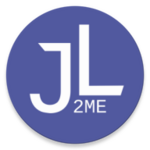

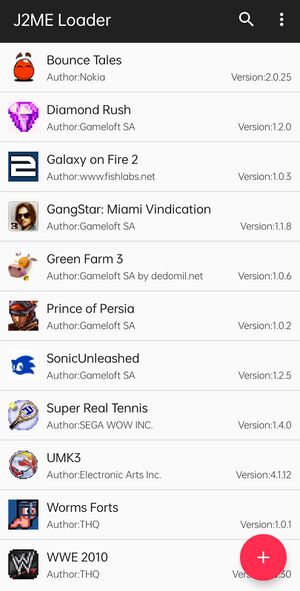
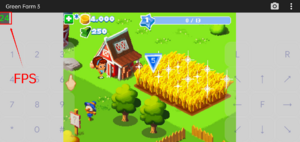
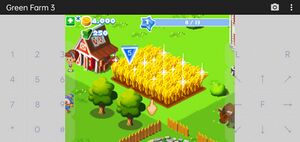
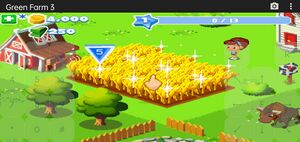
![]() (button) at the lower right corner in the main J2ME-Loader Windows and select the
(button) at the lower right corner in the main J2ME-Loader Windows and select the 